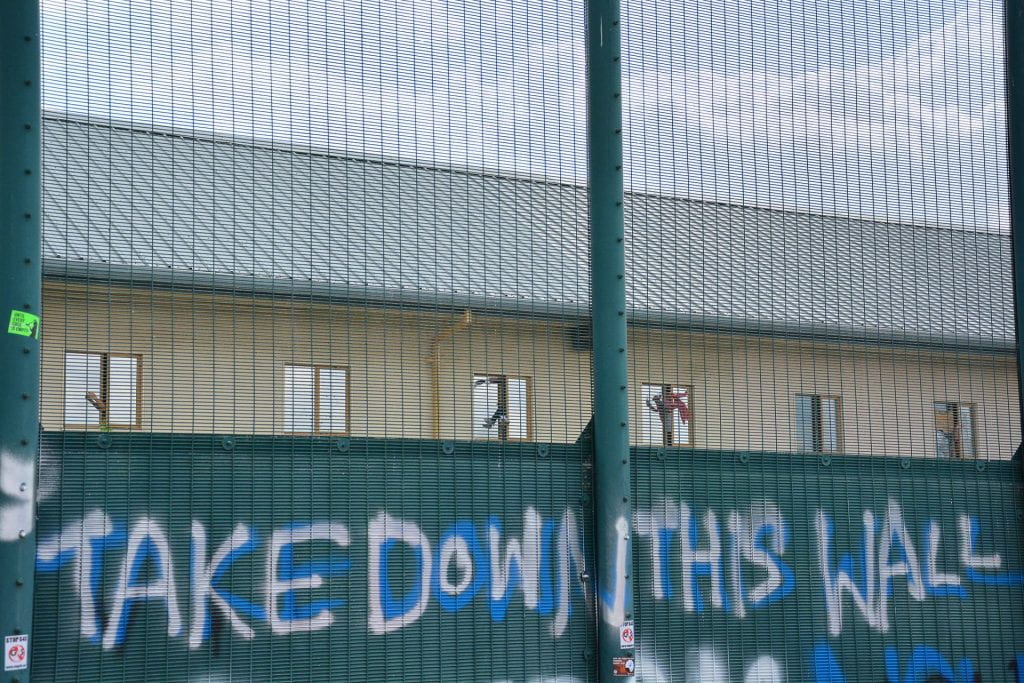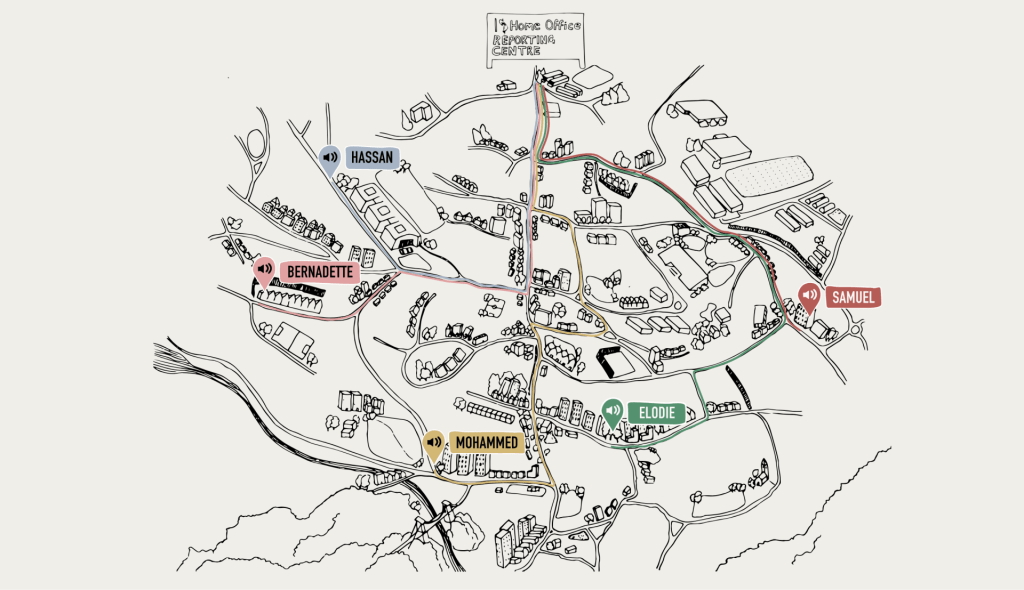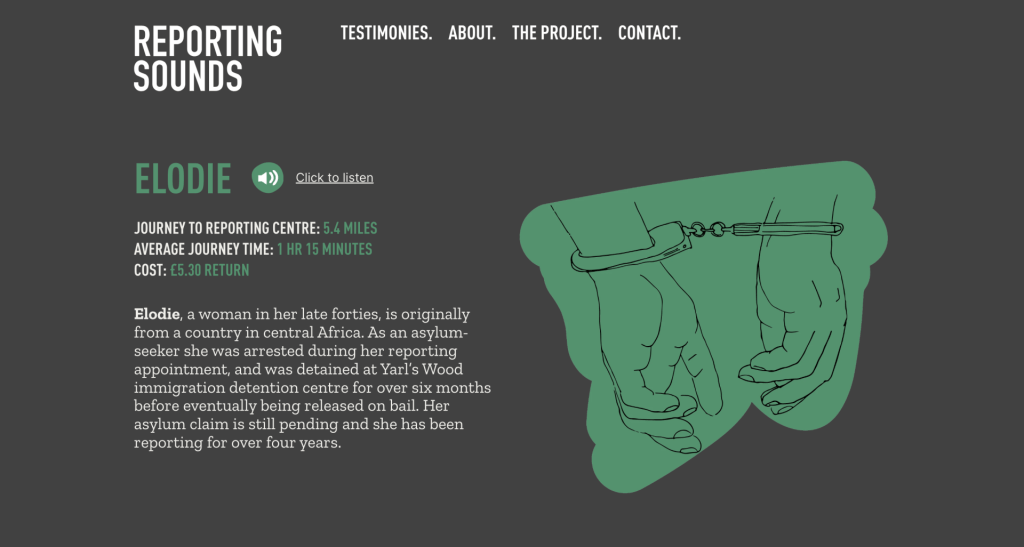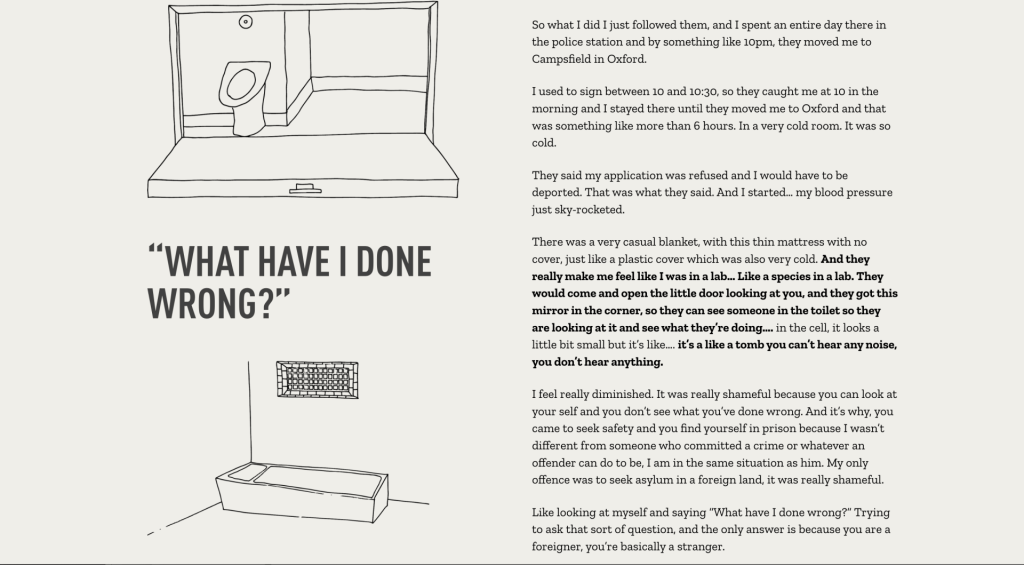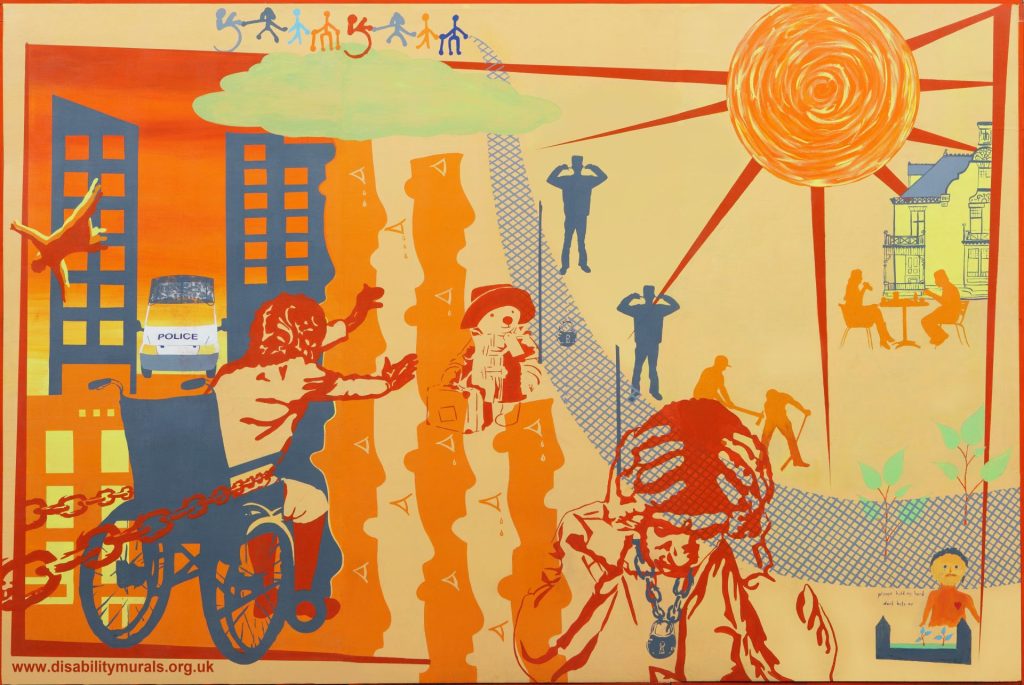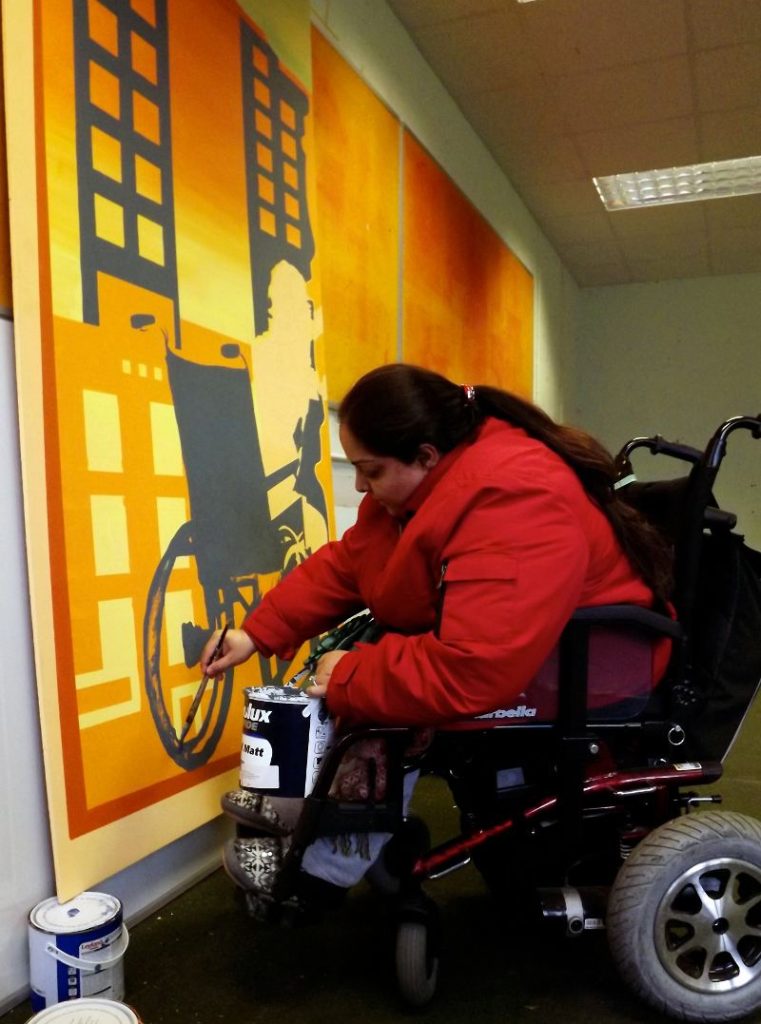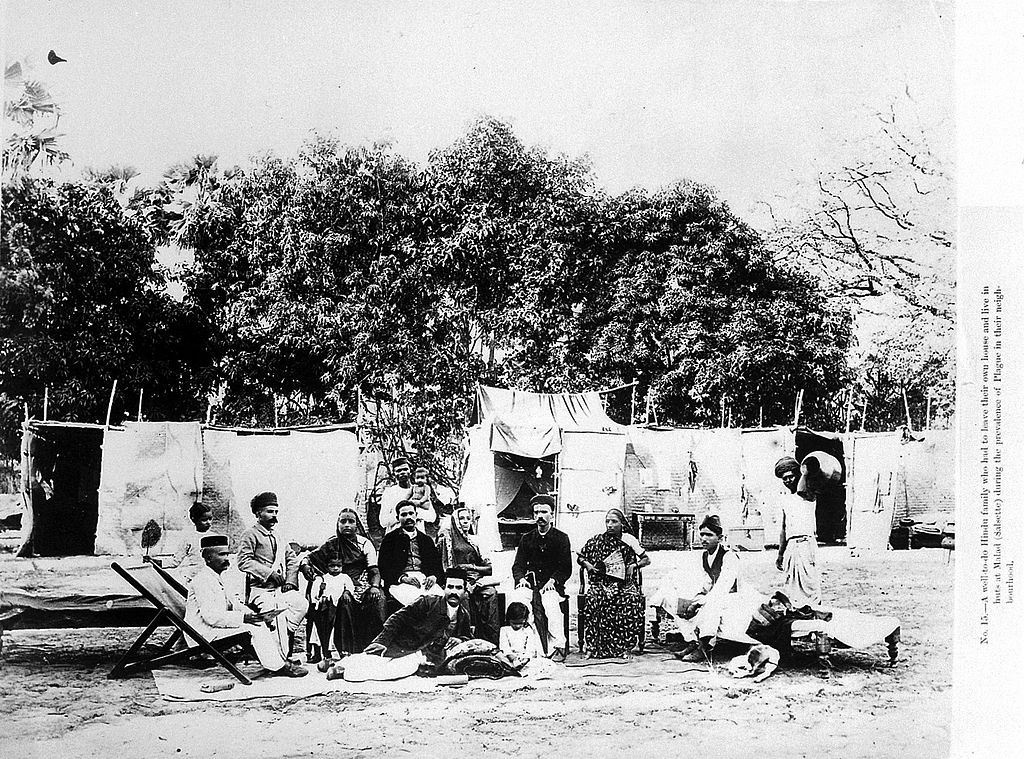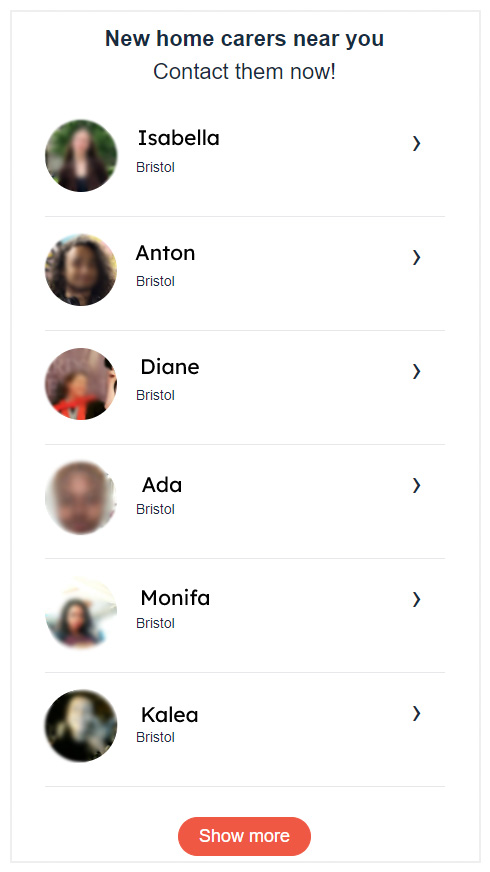A special series from the Migration Research Group of the School of Sociology, Politics and International Studies at the University of Bristol.
By Enocent Nemuramba.
In August 2022, a group of men and women gathered at the entrance of Kalafong Hospital in Atteridgeville, a township near Pretoria, South Africa. They were not patients, nor were they staff. They were members of Operation Dudula (hereafter Dudula), a vigilante movement that has grown in visibility over the last three years. Their objective was simple, if chilling: to block access to health care for anyone whom they suspected of being a foreign national (or immigrant) based on the colour of their skin or the language that they spoke. Patients were turned away, accused of ‘stealing’ resources. In some cases, healthcare workers themselves were intimidated for treating immigrants.
This spectacle of exclusion has not ended. In 2025, Dudula (which loosely means to ‘push back’, ‘drive back’ or ‘push out’ in the local Zulu language) extended its activities to dozens of clinics across Gauteng and KwaZulu-Natal provinces. As the group explained in a public statement: ‘Our goal is clear, to protect our people’s rights and ensure public services prioritise South Africans first.’ Later, the movement targeted schools, delivering letters to principals in Soweto that warned against enrolling undocumented children. The vigilante group’s de facto leader, Zandile Dabula, was even more explicit: ‘We’re going to be stationed at schools, and no foreign child will be allowed to attend a public school.’
What began as sporadic harassment has hardened into a strategy, to recast public services as checkpoints of belonging. Hospitals and school gates have become borders. Citizens and non-citizens are separated not by officials in uniforms but by self-appointed vigilantes.

From everyday bordering to vigilante bordering
Migration scholars describe ‘everyday bordering’ (Yuval-Davis et al. 2018) as the dispersal of immigration control into daily life, from landlords checking passports to nurses being asked to check who is entitled to care. Dudula takes this dynamic a step further.
The movement’s modus operandi amounts to what I call vigilante bordering, an overt and extra-legal enforcement of access by organised non-state actors who appropriate the logics of the border and re-stage them in ordinary sites. Unlike bureaucratic bordering, which disperses the state’s authority into welfare and work, vigilante bordering relies on coercion, intimidation and public spectacle to impose exclusionary rules of access. This often means operating alongside and sometimes against the law. The concept entails mobilising vigilantism to create everyday ‘border posts’ that confront and, in practice, curtail constitutional guarantees.
Dudula illustrates this phenomenon vividly. Hospitals and schools, spaces meant to symbolise universal rights, are re-imagined as checkpoints. Vigilantes patrol entry, scrutinise bodies and determine belonging. In so doing, they reproduce the aesthetics of border control while producing new geographies of exclusion.
Vigilante mobilisation and the making of vigilante borders
Operation Dudula did not appear from nowhere. It is a culmination of long-standing frustrations by South Africans with unemployment, inequality and weak service delivery, which are frequently channelled into xenophobic scapegoating. What distinguishes Dudula from earlier waves of anti-migrant violence in South Africa is its organised and performative character.
Rather than spontaneous riots, Dudula stages carefully choreographed blockades, livestreams confrontations and issues press statements. While their actions fall within the broader subject of policing everyday life in South Africa, as described by Buur and Jensen (2004), vigilante mobilisation functions as informal social control that blurs with state authority. In Dudula’s case, this control is explicitly redeployed to construct vigilante borders.
The consequences of vigilante bordering can be fatal. A sick one-year-old child died after the mother, from Malawi, was denied access to Johannesburg’s Alexandra Clinic by members of Dudula. The cumulative impact of these tragic events is that, over time, they instil fear in immigrant communities, prompting some to avoid hospitals altogether, which can delay treatment for tuberculosis, HIV or maternal health. Vigilante bordering in the health sector not only reshapes mobility but also impacts access at the most intimate scale.
Rights under siege
South Africa’s Bill of Rights enshrines socio-economic rights and the country’s Constitutional Court has repeatedly affirmed that these extend to all who live in it. The right to basic education (Section 29) is unconditional and the right to emergency health care (Section 27) is explicit. By disrupting access to both, Dudula challenges not only migrants’ rights but the state’s constitutional order.
Before the advent of vigilante bordering at the gates of public health institutions, immigrants had long been subjected to what migration scholars refer to as medical xenophobia. In abstract terms, it ‘refers to the negative attitudes and practices of health professionals and employees towards migrants and refugees based purely on their identity as non-South African’ (Crush and Tawodzera, 2013). These sustained practices of medical exclusion, which are now punctuated by intimidation at facilities, can have outsized effects. They do not simply inconvenience migrants, they also corrode trust in the health system itself.
Civil society organisations, medical NGOs and legal advocates have sounded the alarm on vigilante mobilisation at health centres and schools. Médecins Sans Frontières has documented cases where Dudula intimidation effectively denied care, including reports of security staff and healthcare workers acting in collusion with the vigilante groups. Education rights groups have condemned school gate blockades as unlawful and harmful to child development.
Beyond South Africa
While Operation Dudula is distinctive, its orientation and approach are in no way unique. Across Europe, community patrols have targeted refugee housing. In the United States, volunteer militias monitor the southern border. In each case, vigilantes position themselves as defenders of sovereignty, translating social anxieties into exclusionary practices.
What South Africa shows is how such movements can turn inward, with hospitals and schools, rather than border posts, becoming the stage. The immediate implications are that any site of welfare provision can now be reframed as a border, eroding the universality of rights through the spread of vigilante bordering.
Towards counter-mobilisation
What, then, is to be done? I contend that the state has an obligation to preserve the rule of law and ensure the depoliticisation of hospitals and schools. So far, the timid response by the South African government and law enforcement authorities has only served to embolden vigilante groups such as Dudula. Some of their members are now engaging in open confrontation with immigrants inside hospital facilities. For as long as these vigilante groups are allowed to carry out their unlawful activities with impunity, vigilante bordering is bound to get worse.
South African civil society actors, from the media to NGOs, should be commended for the proactive approach they have taken to record and challenge vigilante bordering incidents across the country. Journalists, NGOs and community leaders deserve ongoing support to ensure that they continue exposing human rights abuses by groups like Dudula. Their advocacy efforts place the spotlight on the actions of vigilante groups and provide the impetus needed to constantly challenge and contest them. Over time, this reduces the spectre of accepting vigilante impunity as the norm.
Public education is necessary to help increase awareness about the dangers of denying healthcare access to a segment of the population. Dudula has garnered public sympathy for its actions by conveniently claiming that they are protecting ‘public resources’ by restricting non-South Africans from accessing public services. What is missing from the ongoing discourse on Dudula’s actions is that health access restrictions not only pose health risks to immigrants but can potentially impact the health security of communities in which immigrants reside, especially if there is an outbreak of a communicable disease.
Conclusion
Operation Dudula’s vigilante mobilisation is a demonstration of how everyday bordering is being appropriated by non-state actors to reshape everyday spaces like hospitals and schools into sites of exclusion. This new form of bordering, which I refer to as vigilante bordering, mimics the state’s control of access while undermining human right protections.
Recognising vigilante bordering matters for migration scholarship because it shifts the analytical gaze from state policy to non-state mobilisation. It matters for human rights advocates because it highlights the fragility of universal rights when enforcement is outsourced to vigilante actors. And it matters for everyday South Africans because it warns how easily the spaces of care and learning can be transformed into spaces of exclusion.



